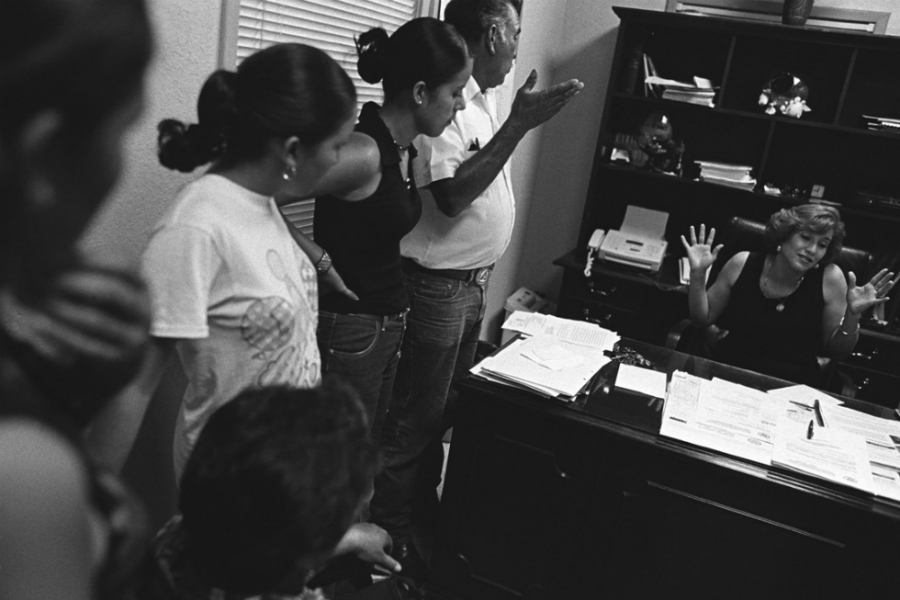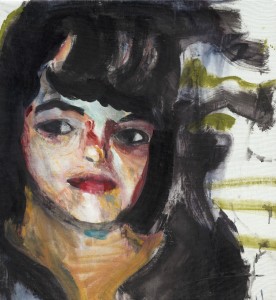Remember Them — Reviewed

We visit an exhibition filled with harrowing and complex themes, delivered in a simple, powerful manner…
“Since 1993, 14,525 murders have been committed in Ciudad Juárez bordering on the United States, of which 1,248 have victimized women. Most of these crimes against men, women and children remain unpunished.”
Why? The answer is we don’t know. A more complex answer calls for a look into Mexico’s relationship with the US. In the early 1990s, Mexico, Canada and the United States signed the North American Free Trade Agreement, resulting in American industrial parks multiplying along the Mexican border and mass relocation for Mexicans looking for work.
What they found was very low pay, poor or none existent housing and a parallel, growing illegal market in drugs, gang violence, kidnapping and carjacking. Violence became a regular, expected part of life in Juárez. And as photojournalist Julian Cardona puts it, ”anybody can be a victim”.
This is the terrifying message that you take away from Remember Them, a simply accomplished, powerful exhibition spread over two gallery spaces in the Victoria Gallery and Museum.
Four works by four artists, the show begins with Cardona’s The Truth, a series of silver gelatine hand prints curving round the central first floor walkway. Cardona has lived in Juárez all his life; his family were economic migrants seeking work in the ‘maquiladoras’, or factories, along the border (see him chronicle the fate of the area and its residents here).
The grainy monochrome shots are factual, removed; here is a funeral, a search for a body, a confrontation in the prosecutors office (pictured), the bare and simple home of the missing. The photographs are not placed in chronological order, and the overall feeling is one of disruption and endless grief. Grief from the loss, grief for the lack of justice, grief from not even knowing what happened to the victim.
The horror of the situation intensifies as we step into the main gallery. Brian Maguire’s intense and expressive paintings are also childlike, jolly and fairly creepy. It’s an arresting sight. Maguire has been visiting the families of disappeared and murdered women since 2009, painting portraits of the victims — one for the family to keep, one for exhibition. It is those second versions we see here (I wonder how similar the versions are), accompanied by in depth and graphic accounts of their stories.

This gives real context, and transform the portraits from decorative to memorial, the last picture Veronica and Erika and the other women will be remembered by. This work also serves as a harrowing reminder that it is incredibly dangerous for their families to pursue justice through the system that currently exists. One example:
‘Rubi Marisol Fraire Escobedo, 16 years old, was the daughter of Marisela Escobeda Ortiz. She was killed in June 2009 in Ciudad Chihuahua. The young girl’s partner Sergio Barraza admitted to the killing and brought the police to her body. At trial Sergio retracted the confession citing torture and he was released. A week later Marisela was protesting outside the Courts of Justice in the centre of Ciudad Chihuahua when late in the evening a man emerged from a white car and after exchanging a few words with her followed her into the street and shot her dead. Over the next few days her family members were threatened, her partners’ business was burnt and one member killed. After the funeral her family fled Chihuahua to the USA, where they now hide having been granted asylum.’
Further into the room, on a large pink wall, is pinned the work of Lise Bjørne Linnert. An international project that has been exhibited widely and continues to be added to, Linnert uses public collaboration to stitch the names of the missing and murdered onto small name tags (the type you would sew into a child’s PE kit). The participants were also given the choice of stitching the words ‘unknown’ or ‘urgent’ in their own language, utilising the power of the international community and going some way to make this a shared issue, creating more empathy and anger that these crimes are being widely ignored.
Embroidery is a delicate skill that takes time to learn and master, and is the perfect meditative medium to think about the victims, as is the delicate and precise manner in which these tags are displayed. The fabric is laid out in a pattern — morse code for the national anthems of the US and Mexico.
The final room is perhaps the most accusatory. Teresa Margolles‘ film Irrigación was commissioned by Ballroom artspace in Marfa, Texas. After painstakingly collecting body fluid from multiple sites of violence in Ciudad Juárez, the artist blended it with 5000 gallons of water, and dispensed the mixture out of a truck along the Texan route between Alpine and Marfa.
The film is literally 30 minutes of continuous shot of the truck dumping this mixture out onto the road. But is also a direct comment on America’s involvement in Mexico’s political, economic and social problems. Irrigating the desert roads with the Mexican dead, baptising the road with blood; a waste of water, a waste of life. It was at this point for me that I mentally tracked back through the exhibition, and back through all the very personal, horrific stories that had been revealed to me, and ultimately back to the question: why?
“The obvious questions visitors to Remember Them want answered are ‘why is this happening’ and ‘why doesn’t someone stop it happening’?” commented curator and gallery director Matthew Clough. “There doesn’t appear to be a simple answer to the first question: a complex combination of male opportunity, attitudes to women, poverty, a criminalised economy and a lack of stable governing infrastructure all appear to play a part. These factors also enable the problem to continue: overall, the authorities rarely investigate such killings adequately and families receive no justice.”
Laura Robertson
Remember Them is open to the public at the Victoria Gallery and Museum now until 1 Feb 2014
Open Tuesday to Saturday 10am-5pm // Closed Bank Holidays





